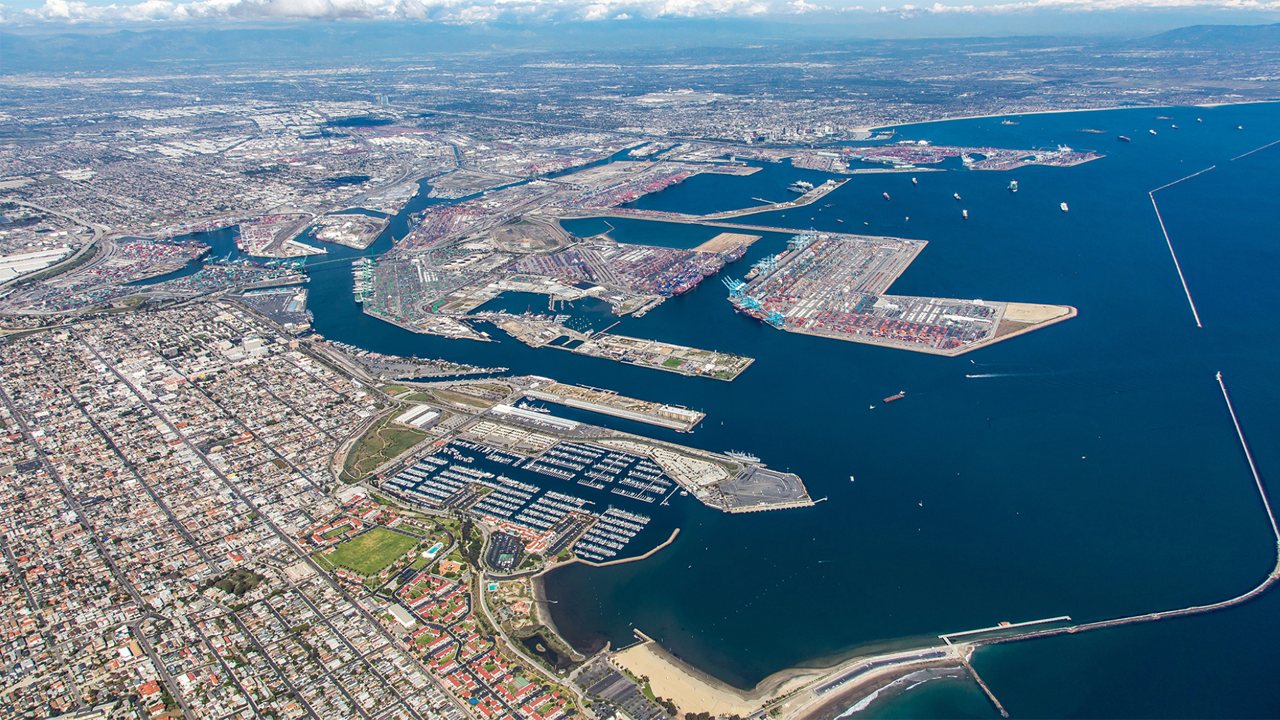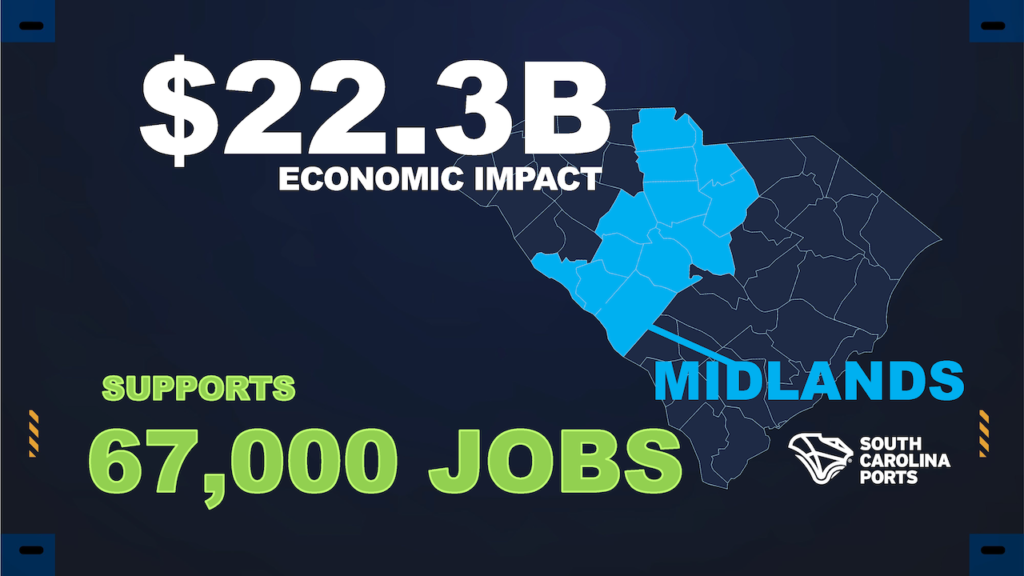
Intermodal Briefs: Port of Los Angeles, SC ports
Written by Carolina Worrell, Senior Editor
Aerial view of the San Pedro Bay Port Complex in California. (Photograph Courtesy of Port of Los Angeles)
The Port of Los Angeles finishes 2023 with five months of year-over-year growth. Also, South Carolina Ports (SC Ports) gives the Midlands region a big economic boost, according to a recent report.
Port of Los Angeles
The Port of Los Angeles on Jan. 16 reported that it has closed out 2023 on a strong note, processing 747,335 Twenty-Foot Equivalent Units (TEUs), a 2.5% increase over last year, marking the fifth consecutive month of year-over-year gains for the Port.
The Port finished 2023 handling 8,634,497 TEUs, about 13% less than the prior year. Trade declined in most categories at ports worldwide, yet the Port of Los Angeles says it “retained its position as the nation’s busiest container port for the 24th consecutive year.”
“In 2024, our sights are set on community investment, sustainability progress and capturing additional market share,” said Port of Los Angeles Executive Director Gene Seroka. “To drive cargo, we’re investing in a 10-year, $2 billion capital improvement program. We’ll also focus on secure technology enhancements to improve efficiency and reduce our carbon footprint. All that leads to additional jobs and the Port’s ability to re-invest more dollars back into our communities.”
December 2023 loaded imports landed at 369,477 TEUs, an increase of 5% compared to the previous year. Loaded exports came in at 121,575 TEUs, an increase of 26% compared to 2022. Empty containers totaled 256,283 TEUs, an 8.5% decrease compared to last year.
Last week, Seroka outlined the Port’s priorities for this year. Watch the 9th Annual State of the Port address here.
Current and historical cargo data, including fiscal year-end totals, are available here.
SC Ports
SC Ports makes a $22.3 billion economic impact in the Midlands region each year by “efficiently moving cargo for port-dependent businesses,” the Port reported on Jan. 12.
This, SC Ports says, is a quarter of the Ports’ $87 billion annual economic impact across the state, according to a recent study (download below) by research economist and University of South Carolina professor Dr. Joseph Von Nessen. New data shows a 43% increase in economic impact in the Midlands since the previous study was performed in 2019.

“These numbers show that SC Ports’ value to South Carolina extends well beyond the Port of Charleston,” said SC Ports President and CEO Barbara Melvin. “In the Midlands, we’re supporting advanced manufacturers, healthcare companies, retailers and paper producers, moving goods for large companies and small businesses alike. These relationships with our customers provide a proven economic benefit to Midlands residents.”
By keeping freight moving for South Carolina companies, SC Ports says it directly and indirectly supports more than 67,000 jobs in the Midlands, with labor income totaling $4.5 billion.
“SC Ports is a tremendous asset to South Carolina,” said SC Ports Board Chairman Bill Stern. “A well-run port system brings world-class businesses to the state, which in turn means good-paying jobs and opportunities right here in the Midlands. SC Ports is proud to be a true economic engine for our state’s residents.”
Looking at South Carolina overall, port operations support 260,000 jobs, meaning 1 in 9 jobs in South Carolina are tied directly or indirectly to SC Ports, according to the report.
“Port operations attract port-dependent businesses to locate or expand throughout the state, generating billions in economic impact and supporting thousands of jobs for South Carolinians,” Von Nessen said. “Our state’s economic success is directly linked to SC Ports’ continued growth.”



